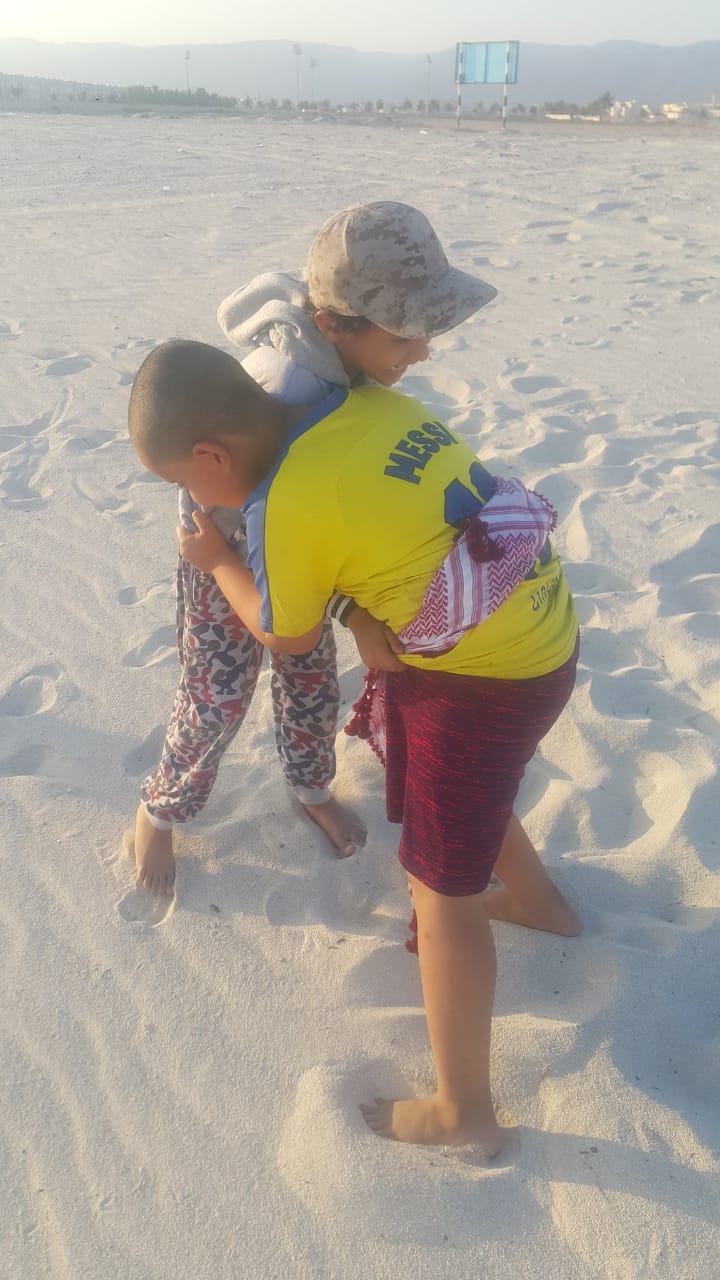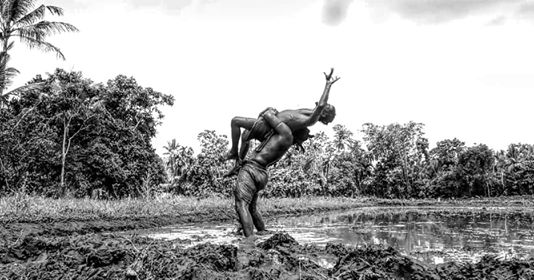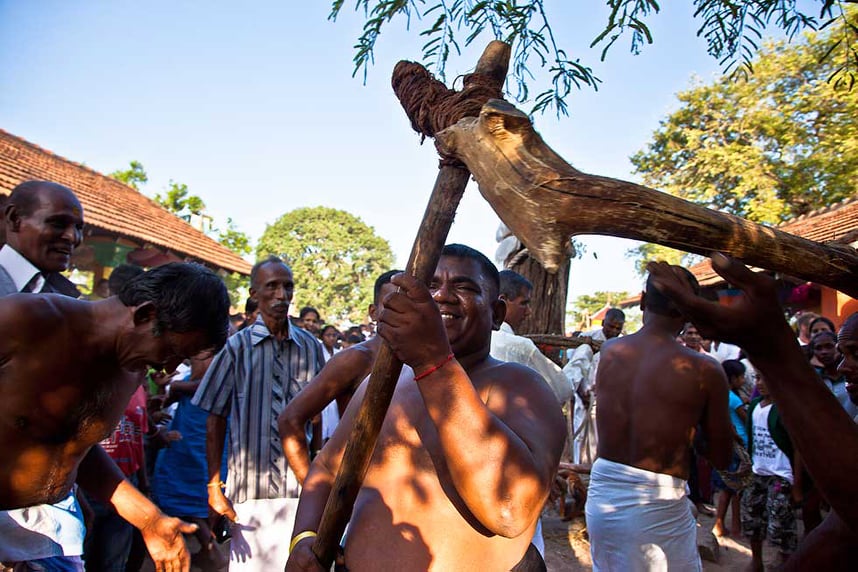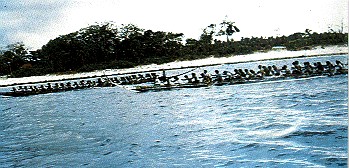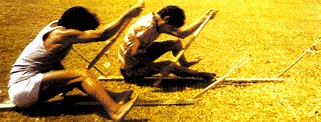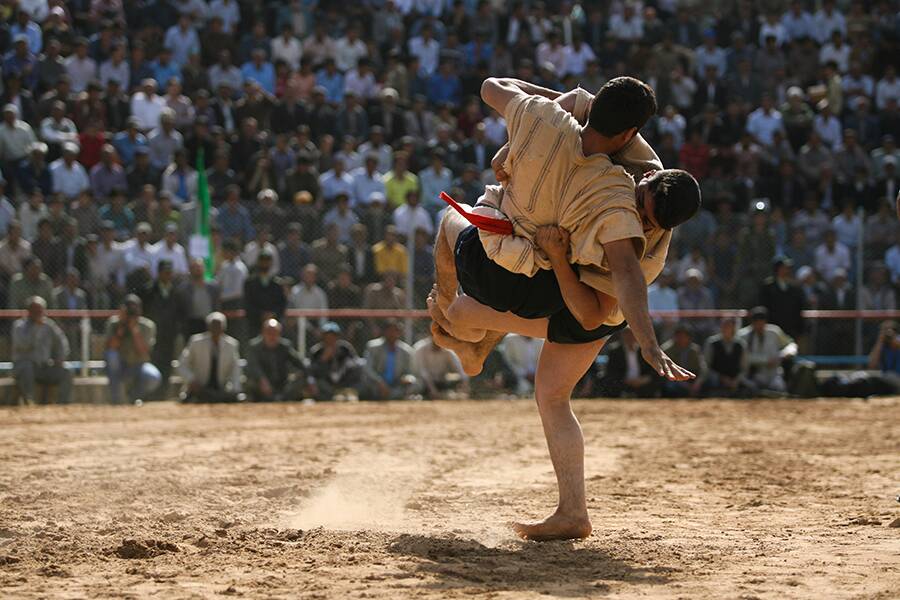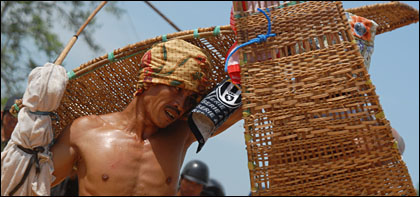- Name of sport (game): Adimurai
- Name in native language: Tamil: அடிமுறை
- Place of practice (continent, state, nation):
Tamil Nadu, India
- Name of sport (game): Almokabasah
- Place of practice (continent, state, nation):
Compressing wrestling, or the so-called local menes, is a form of wrestling games prevalent in the south of the Sultanate of Oman, and is usually played in Dhofar Governorate and parts of eastern Yemen in Al Mahrah Governorate.
- History:
Between the eighteenth and nineteenth centuries, our ancestors invented a wonderful traditional wrestling, in which there was no violence, hitting, kicking or punching, only easy and uncomplicated wrestling in which the mind parallels strength and skill with technology and techniques with strength Wrestling that gains intelligence, strength and physical fitness for its practitioners without injuries or violent little and commensurate nature The people of the peaceful Dhofar, winning in it is easy as soon as the opponent falls, a land that is considered and practiced by the big and the small because it is loved and this wrestling does not cause injuries and problems for its practitioners “The kabba wrestling is called because you drop your opponent and punch on his back on the ground without movement, which is called the Jabali dialect (Munis or Shinas).
At that time, the means of entertainment and entertainment were few and different, with their simplicity and difficulty, most of the time making the press wrestling make you full of strength, enthusiasm and pride Pressing sport was an art, love and honorable practice in the Governorate of Dhofar, and a cause of pride for the strong man. Press wrestling is considered one of the basic sports in Dhofar and evidence of youthfulness and courage at the age of puberty is a sport practiced and loved by parents and grandparents and ancient and ancient wrestling that is almost disappearing in our days due to the lack of practice and interest in it. - Description:
The traditional phalanx wrestling method
“Al-Maksba wrestling” is a form of wrestling games prevalent in the south of the Sultanate of Oman, and they are usually played in the Governorate of Dhofar and parts of the Republic of Yemen such as the Yemeni governorate of Mahra and others. The match begins with both players wearing belts on the abdomen. Their waist. Each of the players grabs the opponent from the belt and tries to throw him to the ground. Alabbasa wrestling is one of the most favorite games for men in the Governorate of Dhofar. Most of the matches are held in the form of a challenge and show strength and parachutes at events such as weddings and in any celebration or civil strife, wrestlers follow the rules And the generally accepted laws in this wrestling in the most complete way and in the presence of arbitrators and spectators, and when the match ends The loser and the winner shake hands with each other, and the loser accepts the loss with open arms and sportsmanship. This is a type of wrestling that is not based on violence, and aims at honest competition and the presentation of mind and experience over strength, size and societal cohesion as an integral part of the Omani culture of Dhofari. The word “Makabesah”, which in Arabic means “pressed or pressed” a person on the ground and in the Jabaliya is called “ Minus or Shinas "Wrestling consists of several rounds, and wrestling takes place in two rounds in the event of victory, and in the event of a tie, one round is added to the resolution. There are techniques and techniques that the wrestler must know in order to be able to win and they include types of tugging and pulling movements and other things that lose the competitor's balance, And there are other defensive or counter moves and work to surprise the opponent very quickly to drop the goal of the game That the competitor falls on the ground, and is fixed on his back in the ground, the match consists of two rounds, and in the event of a tie, the third round is added.Laws and rules of press wrestling
Wrestling may consist of three rounds, and each round is three minutes, with the exception of some tournaments Winning is by dropping the wrestler, land in two out of three rounds, or winning one round and drawing two out of three rounds.
The victory is calculated by a strong and direct drop of the wrestler on his back in the ground, and the winning wrestler fixes the losing gladiator in the ground for short periods on the ground, And you may find the opposing wrestler resisting a fall, avoid on his back, trying to fall on the side, belly, or any place other than back, so as not to be counted for a loss. Gives a competition a certain victory over him, fixing on the ground does not require a long time. Just the opponent falls on the back of the other wrestler and he is on the ground For just a few seconds on the floor, that makes it easier to distinguish winner from loser. The loss is by falling on the back two out of three rounds, or by drawing in two rounds and losing one round, or by withdrawing from the match for any reason, exclusion from the arbitration committee in the match for legal or ethical reasons, lack of respect for the competitor, lack of competitions conditions for him, or the loss of hold on the belt While wrestling or gripping an opponent's clothing and body while wrestling.*Draw or replay of the round
In the event of a negative tie in one round and the inability to drop the opponent within the specified time of three minutes for one round, the referee may give one minute as additional time, and if there is a tie in the two rounds out of three rounds, a 0-0 draw or a positive tie for a round 1-1 And the third round is in which the decision is made, and if the third round has ended with what is in it with a draw, and the victory has not been decided yet, a fourth round is added, and each of the wrestlers searches for the golden opportunity that gives victory once.
If the time allotted for the match ends without a victory, then the victor is the one who gets the most points in favor of the most proactive wrestler by attacking first and has beautiful skills and technique and wonderful techniques in press wrestling and has a clean play free of errors and wastes of time.
And in the event that there is no stabilization of the opponent, just the fall of the wrestlers together or next to each other, or they fall close together, or fall far from each other, or one fell on the stomach And the second on the back or he fell between them a short distance or a short distance, and there was no fixation for the opponent when falling on the ground (issued with a chest), so a negative draw is calculated and the round is repeated, and the negative falls are not counted as a tie, after the negative fall, the referee returns the round again at a new time 3 Minutes again * A negative fall What is a negative or a negative fall is a cold drop is not strong and is not required to win Just a weak fall and there is no strong technique or technique that makes this fall count for victory, the referee re-wrestling again and a new time of 3 minutes.
The fall that counts as a win is like a direct and strong intentional fall in it from the techniques, technology and effort, which makes it a 100% victory.
Rating, calculation of points and warning?
The positive point is calculated corresponding to the negative point calculation for the other wrestler :-
* Release the grip from the belt grip and grabbing the opponent's clothes and body by hand
* Manipulating the length or width of wearing the belt other than the agreed-upon specifications, or hurting the competitor with an illegal grip
* Slashing the head or face with the head or face of a competitor during wrestling in a standing position or a deliberate or unintended fall
* Hitting the shoulder on the opponent's face and chest, or hitting the knee on the opponent's body
* Intentionally wasting time standing for a long time without attacking or trying to bring down the opponent
* The introduction of new, strange, and unknown movements that violate the rules of press wrestling and may be dangerous for wrestlers
* It is forbidden to speak with the opponent during wrestling in the match
* Ethical problems, lack of commitment and respect for the competitor, the judges, the contests committee, and the public
* In the event that some mistake or the same mistake is repeated twice, the wrestler may receive a warning or reach a red card expulsion and be prevented from participating in the next tournament And in the event that the mistake is repeated with the same wrestler in another tournament, he may be permanently banned from participating in the tournaments held by the International Piston Wrestling Association. And in the event that the mistake is repeated with the same wrestler in another tournament, he may be permanently banned from participating in the tournaments held by the International Piston Wrestling Association.
*Skills, techniques and techniques of phalanx wrestling
Omani phalanx wrestling in Dhofar GovernorateIt is an Arab wrestling remaining in our time, a beautiful and strong wrestling free of violence in which there is no hitting, kicking or punching, A wrestling that relies on the use of reason and peaceful defense methods against larger and more people, and there is no need for violence that is not justified in a sport that is predominantly peaceful and a spirit of humility and reason instead of violence And it has beautiful techniques and skills, there is the technique of obstruction from behind the opponent's foot by using the feet with the use of the strength of the arms to raise and throw and keep the opponent under control and using the skills of the mind with strength produces the art of intelligent pistons wrestling sport It is easy to raise and drop larger and more powerful wrestlers, and it also depends on taking advantage of the mistake of the opposing wrestler and reversing an attack to bring down the ground and fix it on Dahra. Here are some of the technical arts in the traditional presses wrestling in the Dhofar Governorate (Move a step quickly to the right with the heel of your foot pointing to the left behind the opponent's heel to the right, so that you start to go towards the opponent's left and then quickly pull him down.)
* Attack technique
(Put the heel of your right foot, fear the bottom of the calf muscle or behind the Achilles tendon, the left foot of the opponent while maintaining your stability on one foot and pull the opponent firmly to the ground on the leg remaining on it and stand up to fall, or complete your left turn until the opponent is thrown on your right side)
* Take advantage of the opponent's mistake and launch a counterattack :
(The attacker starts when the opponent leans forward to attack with one leg, with one foot behind your foot and about to step your drop shifter. You have to take the opponent to stand on one foot and reverse the attack to drop. A pull is forcefully against the opponent's raised foot to drop).
*Hip disability technique
(Moving the hips of the foot into the inner hip of the opponent's foot to stabilize it and not move it, then pull it with the freed foot on one side to be surprised by a fall and imbalance)
* It is one of the oldest wrestling techniques known as stabbing (in which the player quickly pulls the opponent out with the help of a side while blocking one of the opponent's feet to fall)
* This is one of the easiest moves of piston wrestling, in which the player uses his right foot to pull the opponent's left leg from the inside, and at the same time pulls the opponent to one side and is dropped on the ground)
* The skill of attracting the foot to lose balance (The leg-by-leg pulling method is sometimes replaced by the leg-clasping movement with a leg that was pulled with your leg by the opponent's leg so that he stays on one foot and the opponent loses balance)
* Walking an opponent needs tremendous strength
(In which the player raises the opponent from the right side and pushes him to walk on the less balanced left foot until he falls automatically)
Wrestling begins with wrestlers wearing belts on the waist, each wrestler puts his head on the shoulder of the other, then they bend forward and hold each other by the belt on the abdomen in the waist area with both hands while they are in a standing or bending position, and the goal is to throw or drop the opponent by posing and fixing the opponent on his back On the ground, using the feet and lifting with arms and throwing
The basic condition is to put the opponent on his back on the ground without escaping the fist or holding him to the belt, one of the basics of the press wrestling is to wear belts on the abdomen and to hold the belt with both hands is good throughout the time of wrestling until the match ends with one of them falling on his back and the contestant has the right to use the foot to obstruct and drop the opponent or both feet And the discount is with a strong point On the back, it is not worn, and the chest of the winner is fixed on the chest of the loser in the ground. Wrestling consists of three rounds, and each round is from three to five minutes, according to each age group and weight.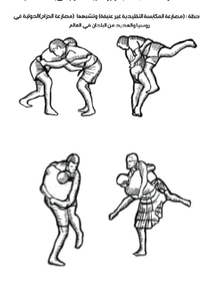
- Current status:
Practiced
- Importance (for practitioners, communities etc.):
Piston wrestling or what is called internationally (belt wrestling) is a widespread type of wrestling in Europe, Asia and Africa, which provides interesting opportunities for the ancient traditional sports of nations and participation in international competitions inside and outside the Sultanate of Oman. In the Sultanate of Oman, we have traditional wrestling wrestling has a number of designations and several patterns In the world the most famous in Asia is called Korish wrestling or Alish wrestling, and in the federal republics of Russia it is called belt wrestling, and in the Korean peninsula is called wrestling serum "called in the Arabic language in the south of the Sultanate of Oman, wrestling wrestling is called the local dialect in Dhofar Governorate (Minus) or (Shinas) And it has several patterns and number of labels in the world, this wrestling deserves support and promotion across the world to introduce the Omani heritage in all parts of the world, and in the past centuries it was practiced pistaching wrestling or shinas in the mountains of Dhofar and its present and show for the purpose of entertainment and competition between friends and gain skills and defense technology, and in Seasons of collective harvest, hunting, frankincense and other community group work in which there is hardship There is a beautiful habit in Dhofar Governorate Assistance is a collective duty of everyone contributing to work and community collective assistance to the individual is usually mandatory and a social duty for everyone in the seasons of agricultural harvest or building and restoration of homes and seasons for fishing sardines and the production of frankincense The men are between a break and rather they work among them a competition and a challenge to entertain and highlight strength and muscle disease will establish a championship Nationwide wrestling wrestling and aggravating one of them the other falls with simple and easy fuel laws, it is today an important cultural element and international sport today it has more than 33 and is recognized in more than 50 countries, sport belt wrestling or pistering wrestling highlights Omani customs and traditions and we have many posts outside The Sultanate is under the umbrella of a private club in the name of the National Struggle Wrestling Association, and in international forums like ours, the Sultanate of Oman is best represented in a number of international championships, and now it is a sport that is growing in popularity all over the world, and there are many demands for its formal inclusion in the International Olympic Games, and today the wrestling wrestling In all its names in the world, it represents a means of rapprochement and friendship between peoples and nations.
- Contacts:
Association Of Almokabasah Wrestling Sport (AMW)
C.R.No 1143951
Tel.: 0096892963377
Poste 40
Code No. 211
Salalah
Sultanate of OmanThis email address is being protected from spambots. You need JavaScript enabled to view it. This email address is being protected from spambots. You need JavaScript enabled to view it.
Fb: https://www.facebook.com/profile.php?id=100028096440714&fref=gs&dti=2552918091657440&hc_location=group_dialog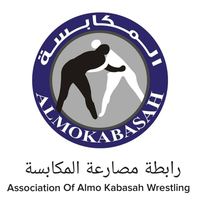
- Gallery:
- Name of sport (game): Angam, Angampora
- Name in native language: Angam, also known as angampora, Sinhala: අංගම්පොර
- Place of practice (continent, state, nation):
Sri Lanka
Angam is practiced widely in western, Southern and Sabaragamuwa provinces in Sri Lanka. - History:
Angam is believed to have been a part of the ancient culture of Sri Lanka that dates back to over 5000 years. It had evolved from generation to generation, standing the formidable test of time, and once became an indispensable part of the Sri Lankan way of life.
For centuries the country went through most turbulent eras that required it’s rulers to muster defenses with the help of their fellow countrymen, to battle invasions that came from foreign lands as well as dissension from within.
The monarchy maintained a reasonable army that consisted of full time soldiers, but the majority of countrymen were ready to answer the call to arms in the name of king and country. Hence Masters of Angam were scattered throughout the land under whom civilians who engaged in different trade such as farming, pottery etc… also trained in the martial arts for mental and physical discipline as much as to be able to protect their country in a time of need.
Because of its fierce nature the British rule of Sri Lanka at the time banned and outlawed the practice of Angam and resorted to extreme measures which included imprisonment, persecution, and an order to shoot in the knees of any known practitioner of the art during the colonial era of Sri Lanka by the British as it fueled the martial spirit of the natives. Due to this situation, Angam was practiced solely underground among a select few. Most Gurus (masters) refrained from teaching, but a few warrior families that were dedicated for the preservation of the art, carried it through generation to generation until today.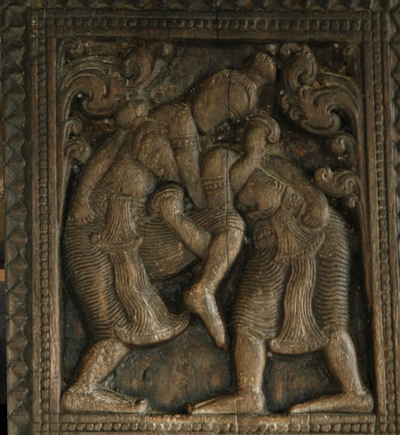 Historical Ambekke Gal Ketayam
Historical Ambekke Gal KetayamThe history of angam is unclear and fragmented, due to the fact that it’s vast history and evolution to what it is today, had never been recorded in an official treatise. However it is fortunate that the technical aspects of angam had been documented by angam warrior clans of Sri Lankan. All we have are inconsistent records of instances in history where it has appeared but briefly, only to disappear from the books of history leaving gaps as well as a lot of unanswered questions.
Angam is believed to have been a part of the ancient culture of Sri Lanka that dates back to over 5000 years. It had evolved from generation to generation, standing the formidable test of time, and once was an indispensable part of the Sri Lankan way of life.
For centuries the country went through most turbulent eras that required it’s rulers to muster defenses with the help of their fellow countrymen, to battle disturbances that came from foreign lands as well as dissension from within.
The monarchy maintained a reasonable army that consisted of full time soldiers, but the majority of countrymen were ready to answer the call to arms in the name of king and country. Hence Masters of Angam were scattered throughout the land under whom civilians who engaged in different trade such as farming, pottery etc… also trained in the martial arts for mental and physical discipline as much as to be able to protect their country in a time of need. Out of these schools several managed to be outstanding and make the books of history.
The earliest indication of Angam is believed to have been inherited through the vast knowledge of King Ravana who believed to have ruled over ancient Sri Lanka some 6000 years ago. One of the more recent indications of the art stems from the war torn legend of king Dutugamunu who reign in 161 BC. King Dutugamunu was believed to have had Ten Great Warriors who have impressive tales woven around their fearless exploits with their king, were believed to have been experts of Angam. Moreover, the king himself is believed to have been an expert in the art, and had been a warrior king in the front line of the battle that ensued the liberation of “Pihit Rata” region of Sri Lanka.
With the end of the Anuradhapura kingdom in 1017, it spelled the end of ancient Sri lanka and the beginning of the medieval timed period. Throughout this time there are only sketchy references to kings and warriors who have displayed skills in the art.
Later with the beginning of Colonial Sri Lanka that ensued after the visit of Lourenço de Almeida in 1505, its citizens were once again called to arms to defend their country against foreign invasions. With the increased activities of the portages e invaders, 16th century Sri Lanka faced more turbulent times. During this era, history boasts of many endeavors of Sri Lankan warriors who defended their territories through savvy war tactics such as guerilla warfare and the use of varied weaponry.
The fabled battle of mulleriyawa in 1562 stands testament how Angam became an invaluable weapon to fend off invaders at the hands of heroic Sri Lankan warriors. After years of insurgency, the foreign invaders managed to divide and conquer the island through trickery. This spelled fatal to the Sri Lankan martial art world, as its new foreign rulers, the appointed governor of Ceylon Robert Brownrigg banned and outlawed the practice of Agam. Extreme measures were taken that included imprisonment, persecution, and an order to shoot in the knees of any known practitioner of the art.
In the outset of such times, many (gurus) masters of the art, along with its avid practitioners went underground, and employed various methods of concealing the art in plain sight. One such attempt was within the rhythmic movements of Sri Lankan Traditional dance, where hidden within the graceful bend of a knee or the flip of a hand was a deadly and effective technique of Angam.
During it’s more prevalent years, Angam was taught by two main schools namely Sudaliya and Maruwalliya, and history speaks of a long standing rivalry between the two clans. Be that as it may this was on of the very few known fact of angam. Besides that there were clans such at Kotte Clan, Ritigala Clan, Warnasuriya Clan, Padiwita Clan, and many more clans who has taken after the names of families and region where the art was well preserved with its true form and purity.The Ravana Age 2554 – 2517 BC.
The age of King Ravana is considered to be the time when the art of Angam was at its pinnacle. Ravana was said to be a specialist in pressure point healing. This is evident in the medical writings done by Ravana. The association between Ravana and Angam is so strong, it is such that even today, Angam gurus begin their training only after lighting a lamp in memory of this ancient Sri Lankan King. The art of Angam which was developed for so many thousands of years has done its best in protecting Sri Lanka from its enemies.
Venerable Kirielle Gnanawimala thero, a writer and scholar, explains this about King Ravana. “It is possible to conclude that the Sri Lankan King Ravana mentioned in the legendary Indian epic ‘Ramayana’, was not a fictional character but an actual historical figure. The “Ravana Kitte” area which is not submerged by the sea and other places such as Ravana falls, Sita eliya, by investigations, implies this and also it is possible to know that King Ravana’s tomb was made in the shape of a pyramid analogous to the pyramids of Giza.”
Ravana is said to have also been a specialist in all forms of Angam. History tells us that he has written several books about it as well. This master in Angam is said to have trained all his soldiers, cavalry and other types of mounted troops in the art of Angam.
According to the historical notes in the “Rajawaliya”, the reign of King Ravana was during 19th century BC, which is the period between 2554-2517, to be precise. The cause for King Ravana’s untimely death is said to be due to a betrayal, a very common occurrence in the history of monarchs in Sri Lanka.
History tells us that, prince “Vibhishana”, Ravana’s younger half-brother, has conspired with Rama, the exiled north Indian prince in order to have the throne of Lanka for himself. Vibishana has known what is said to be the only way to kill Ravana, and had shared this knowledge with Rama. Yet, the popular Indian version of the story tells us that Rama conspired with Vibhishana to kill Ravana because he kidnapped Rama’s wife, Sita.
There are north Indian folk tales and legends that also explains how Ravana trained Rama’s younger brother Lakshmana of the art of Angam, before the war with Rama. Even though Ravana had known Lakshmana was his enemy, he had done so out of pure compassion towards the boy.
Ravana is also said to have ruled over many states in southern and central India. To maintain such a large empire, it is obvious that the aid of something as formidable as Angampora was essential.
Even now, after all these ages, certain families still have deadly Angam fighting styles names after Ravana, which specifically use pressure points to disable and eliminate ones opponents.
Source: https://www.angampora.com/angampora/ - Description:
The combat techniques of Angampora include locks and grips, strikes and blocks, and most especially pressure point attacks that can cause pain or even permanent paralysis. There are also self-defense techniques, sport, exercise and meditation techniques which can be learned. It is believed that there was also a some secretive Angampora techniques known as ‘maya angam’ that used incantations and spells for attack.
Angampora Training
• A practice session in Angampora begins with meditation and offering of merit to the master.
• The student then lights three lamps before he entered the training hut.
• Pledges have to be made promising to use the technique solely for purposes of self-defense and the defense of family or country.
• Actual practice begins with basic warm-up exercises, gradually moving on to special exercises.
• Foot movement techniques are the cornerstone of Angampora; and a foot exercise named ‘mulla panina’ is the first skill taught. This exercise is followed by more advanced techniques.
• Weaponless combat known as amaraya is taught next and the student learns to observe and attack the weak points of an opponent.
• The subsequent area of training is in weaponed combat. In total, there are sixty-four types of weapons; including thirty-two sword variants and several traditional weapons.
• Some of the deadly, higher-level Angam attacks that trainees learn involve the nervous system; while others if executed properly, can halt the blood flow to vital organs leading to paralysis or even death.
• Alongside such techniques students also learn an indigenous medical practice known as beheth pārawal (medical shots) which reverses the effects of such strikes.
• Finally on mastering all these the fighter receives a graduation ceremony at a Buddhist Temple.
• However, they can continue to train to become fencing masters or Pannikiralas; which is the highest position in Angampora.
Source: https://lakpura.com/angamporaAccording to the contemporary experts in Angampora history, there have been six subject areas related to Angampora Education.
They are:
Angampora (Unarmed combat), Ilangampora (Armed combat), Maya Angam (Black and white magic), the Art of Dancing and Drumming, Herbal Medicine and Astrology.
Over the span of time, some of these areas have been lost but the most parts of it have been preserved well by the passionate masters.
The term Angampora refers to physical combat, and is essentially the martial use of limbs, but no weapons. It's categorized into three types; Pora Haramba (offensive and defensive techniques), Gataputtu (grips and locks) and Maru Kala (Vital point attacks).
Pora Haramba has eighteen offensive strikes that can do serious damages to the opponent, and seven defensive techniques to avoid punches from the opponent. Dik gutiya, Athul pahara, Piti pahara are some of the popular offensive techniques in Angampora.
In order to disarm the enemy, make him weak or to kill, the Gataputtu strategy is used. This includes putting grips, locks on opponent’s body parts like hands, legs, and head etc. Diyaballu Gataya, Kathira Gataya, Pimburu Gataya, and Wanda Gataya are few of the many Gataputtu methods. A proper Angampora warrior should know all these, as well as the techniques to redeem from them.
Maru Kala is the most important technique in Angampora. It is advanced and not everyone gets the opportunity to learn it, as this subject includes the study of crucial nerve point strikes. Such strikes require a certain amount of power and speed, and a fighter who is excelled at Maru Kala can cause great pain to the opponent, make him paralysed, incompetent, swoon or give a quick death.
Therefore, a few selected people who are trustworthy can study this, and they should swear a special oath by the name of Lord Buddha and Maha Ravana to not to use these techniques against anyone, unless it’s absolutely necessary. They also can’t teach Maru Kala to anyone with low qualities.
Ilangampora, the art of armed combat is consisting thirty two weapons (Dethis Ayudha) and divided into four main categories; Curved weapons, Circular weapons, Long weapons, and Blunt weapons.
An Angampora student should at least practice for two years before they learn Ilangampora, as it requires a great dedication and discipline.
During that training period trainees got to practice with wooden swords at baby coconut trees, or banana trees. The archery training is done using targets drawn on trees, and swinging coconuts.
Source: https://www.yamu.lk/blog/angampora-the-ancient-martial-art-of-sri-lanka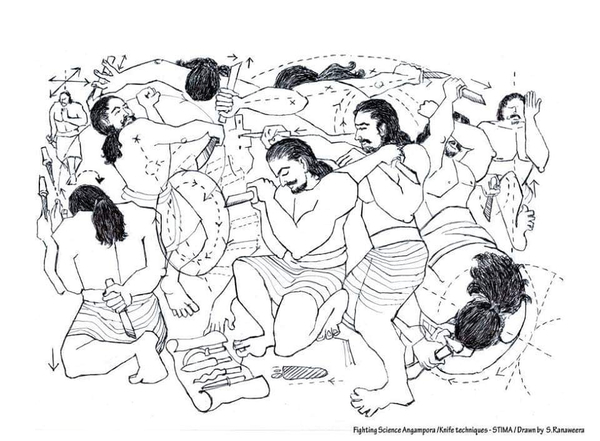 Source: Sri Lankan Traditional Indigenous Martial Art Association
Source: Sri Lankan Traditional Indigenous Martial Art Association
Angam contains six different components, namely;
1. අංගම්ප ොර (unarmed combat)
2. ඉලංගම්ප ොර (armed combat)
3. මායාඅංගම් (black magic & white magic)
4. නැටුම්හාපෙරවාදන (dancing & drumming)
5. පේහධම්මපේශියවවදයක ර්මය (herbal medicine)
6. පයොතිෂ්යවිදයාව (astrology)
Of the six components, Illangampora occupies a special position as it involves the use of arms for combat, and mastery in that art is considered to be essential to become a competent Angam practitioner. A student is required to complete two years of training in other aspects of angam, before starting to learn the art of illangam. Thirtytwo types of weapons, known in the Sinhala language as Dethis-ayudha( “පදතිස්ආයුධ”)are used in Illangam. The 32 weapons are categorized as follows;
1. වක්ආයුධ– Curved weapons
2. වක ්්රආයුධ– Circular weapons
3. දික්ආයුධ– Long weapons
4. පමොට්ටආයුධ- Blunt weapons
5. කංචආයුධ –Kuncha
Source: http://www.natlib.lk/pdf/angampora.pdfElangampora is another special part of Angam. This is known as the armed combat techniques of Angam. To be complete and competent Angam practitioner, the knowledge of Elangam is essential. Normally Elangam is taught to a student after at least two years into his Angampora (unarmed) training. Learning this requires a lot of discipline and dedication. Generally, students are taught the techniques pertaining to all weapons, one can only “master” two or three weapons according to one’s physical prowess. Most of the weapons used for practicing are cleansed with specialized rituals. A student must be granted permission from the guru in order to learn a particular weapon, and this is signified by performing a special ritual where the weapon is handed over to the student by the guru.
This art consists of 21 main weapons including 7 main weapons as follow:
1. Sword - The sword is the most revered weapon in the Elangam armory since ancient times. There are 32 types of swords used in ellangam. Ancient ellangam fighters were experts in wielding the single sword, double swords as well as the four bladed sword play. There are many variations to the sword such as long sword, short sword, wak kadu (curved sword), nai pena kadu (cobra head sword) . The shield was used in combination with the sword in ellangam.
2. Stick (long/short) - The long stick is one of the most important weapons in Elangam. Its length is usually measure up to the nose level of its wielder. It is made using “venivel” or cane sticks, and it is hardened using medicine oils and heating in fire. The main movement of the long stick comprises of the wielders ability to rotate it around one’s body with considerable speed and agility. Long stick comprises special foot movements and 16 basic strikes.
The short stick is an important weapon in the elangam armory. It has become popular because it is a weapon that can be fabricated or found easily. The basic practice of the short stick comprises 8 types of special foot movements and 12 basic strikes including joint locks and wrist locks.
3. Spear - Before learning the spear, the practitioner must become familiar with the techniques and stepping of stick play in angam. After the sword, the spear was the most used weapon in the ancient sri Lankan military. The spear is wielded as a single weapon as well as in combination with the shield.There three types of spears Long spear, Mid length spear, Short spear.
4. Dagger - The dagger is one of the main weapons in the Ellangam armory with single and dual dagger wielding techniques. The dagger is taught for self-defense and close quarter combat. In Angampora there are techniques to attack the upper and lower body. It addition to its martial applications, it also has aesthetically appealing techniques for display.
5. Special Weapons - It is recorded that there are more than 21 weapons variations in the ellangam armory. The most unique weapon among them is the “welayudha”. Apart from that Ang kinissa, Thun kinissa, Maradanda, maruwala, kalakirinyga and the kerchief are weapons for which special foot movement are practiced. Some of these weapons are unique to elangampora.
6. Battle axes - The axe was also a weapon that was a part of the day to day lives of the ancient Sri Lankan. Apart from being used as a tool it was used as a weapon and was normally wielded by individuals of superior strength. It can be dual wielded as well as used individually according to the history King Ravana’s brother Kummbakarna used battle axes as his choice of weapon.
7. Mace - Mainly used to attack the stronger parts of the body — head, thighs and ribs. The practice of Mace (gada) increases body strength. The Mace was used by a select few among the ranks of the ancient Sri Lankan military. Maintaining the balance and moving with the flow of the weapon are important in in Mace wielding. One special feature of the Mace is that a Mace can only be blocked by a Mace and it is difficult to be blocked using any other weapon.
Source: https://www.angampora.com/elangampora/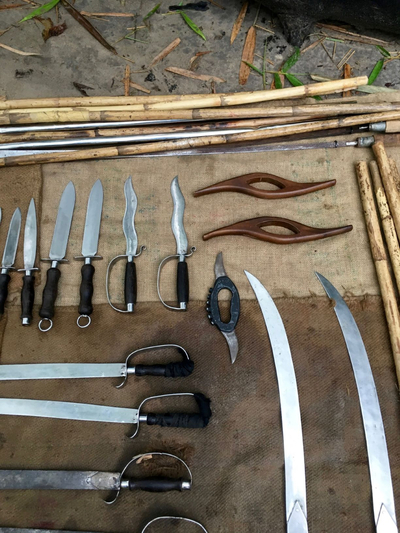
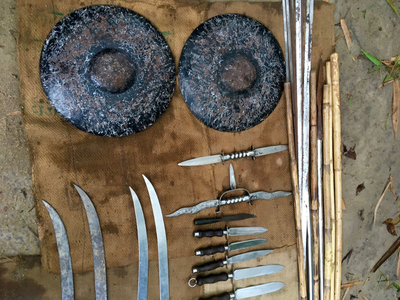
Photos: Sri Lankan Traditional Indigenous Martial Art Association
- Current status:
Angam is practiced by two main schools namely Sudaliya and Maruwalliya that are traced back into history as two rival clans. Apart from the two main schools, there are several smaller groups practicing the element. Among them, Kotte Clan, Ritigala Clan, Warnasuriya Clan, and Padiwita Clan are fairly well known. Additionally, there are few more groups who are called after the names of their families or villages.
- Contacts:
Sri Lankan Traditional Indigenous Martial Art Association
STIMA Main training center
202A, Moratuhena Road, Arthurugirya
Tel.: +94 77 383 8607
Webside: https://www.angampora.com/
E-mail:This email address is being protected from spambots. You need JavaScript enabled to view it.
Fb: https://www.facebook.com/traditionalangam
Youtube: https://www.youtube.com/angamporastima
Instagram: https://www.instagram.com/angampora/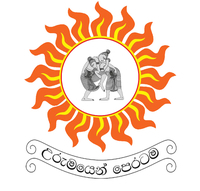
- Sources of information :
Books:
Liyanage, Bandula (2011), Angampora jayagath maraliya, Godage, Colombo.
Deshamanya Dr. Ajantha, Angampora - A Nation's Legacy In Pictures, Perera Hussein Publishing House, ISBN : 978-955-7844-00-8Articles:
http://exploresrilanka.lk/2010/07/angampora-the-martial-art-of-sri-lankan-kings/
https://www.cultural.gov.lk/web/index.php?option=com_content&view=article&id=67%3Athe-art-of-angam-fighting&catid=35%3Aright&Itemid=72&lang=en
http://www.island.lk/index.php?page_cat=article-details&page=article-details&code_title=31826
http://livingheritage.org/angampora.htm
https://www.behance.net/gallery/66960695/ANGAMPORA-The-Deadly-Ancient-Legacy-of-Sri-Lanka
https://www.yamu.lk/blog/angampora-the-ancient-martial-art-of-sri-lanka
https://www.colombotelegraph.com/index.php/angampora-5000-years-of-combat-tradition-a-response/
https://www.behance.net/gallery/14442209/Angampora-A-Photo-Essay
https://projectangampora.wordpress.com/2015/04/10/history-and-mystery/
https://www.talesofceylon.com/tales-of-ceylon/tales-of-angampora/angampora-sri-lankas-unique-art-of-combat/
http://www.jasonblackman.net/blog/angamporaVideo:
https://www.youtube.com/watch?v=eEduYCWEnIQ&feature=share&fbclid=IwAR1IGSR-SylsLGvFe-kXhjPSjy76Lcb8h15GLb9gEOkh6014qfdlfZIgtgA
https://www.youtube.com/watch?v=N9iwNHDNBjw
https://www.youtube.com/watch?v=EPA5-jlt9xU
https://www.youtube.com/watch?v=Jj0S4cc99N8
https://www.youtube.com/watch?v=J6a3DX121D0&feature=share&fbclid=IwAR2x809XxqozeNf22Oo9iEn9ylNxivyvFYFYX60NlmOJDxL2Dyo9HAuoRS0
https://www.youtube.com/watch?v=dSuc64-kcLc
https://www.youtube.com/watch?v=Jj0S4cc99N8&feature=emb_logo
https://www.youtube.com/watch?v=eEduYCWEnIQ&feature=emb_logo - Gallery:
- Documents:
- Name of sport (game): Ankeliya
- Place of practice (continent, state, nation):
Sri Lanka (coastal area)
- History:
A game of hook tugging that has also become lesser known over the years. Similar to Porakeliya, this is a religious ritual for Goddess Pattini.
According to Robert Knox, the great sociologist of 17th-century Sri Lanka, it was a symbolic game that symbolized the sexual power of men. It seems that the men who symbolically unleashed their sexual energy in the presence of the Goddess Pattini worked tirelessly for themselves, thus seeking the happiness, comfort and prosperity they needed in their lives. It is a folk sport that aims to bring peace to the village, country and countryside, not just entertainment. - Description:
The game requires two teams, one of which represents Goddess Pattini and the other her spouse or another male deity. Both teams approach the other in the Angpitiya (tugging field) with a buffalo horn attached to each other. The teams tug at each other until the horn breaks. The team whose horn breaks first loses.
- Sources of information :
- Gallery:
- Name of sport (game): Arias da mene
- Place of practice (continent, state, nation):
Philippines
- Name of sport (game): Arnis
- Name in native language: Arnis, also known as Kali, Tagalog, Escrima, Estogue or Fraile (depending on the region)
- Place of practice (continent, state, nation):
Philippines,
- Name of sport (game): Ashirma wrestling ( آشيرما )
- Name in native language: Aşırma güləşi
- Place of practice (continent, state, nation):
Khoy, West Azerbaijan, Iran
- History:
The Ashirma wrestling is a traditional Azerbaijani style of wrestling which history goes all the way back to the glorious days of invincinble and all-conquering Safavid Empire. The ancient sport originates from the City of Khoy in the Khoy County of the province of West Azerbaijan where the old pastime of native residents of that region was widely practiced and preserved up to this day.
The Ashirma wrestling is culturally unique to Azerbaijani people. The word "Ashirma", comes from the verb "aşırmaq" which in Azerbaijani language means "to throw over, to overturn, to topple".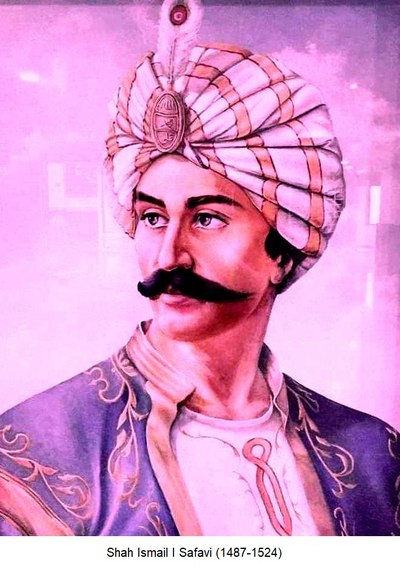
Shah Ismail I Safavi, portrait by Gunay Kazimova (1990), National History Museum, Baku Azerbaijan. - Description:
In the beginning of contest two men stand in front of each other and take a hold which has to be maintained during the struggle.
Each man grabs a thick leather belt (which is worn by both wrestlers around their waists), with their right hands in a peculiar way, reaching over their adversary's back.
The left hands of competitors are free, and can be used for catching any hold of the opponent's body (above and under the waist).
To win the match a wrestler has to throw his opponent onto his back. During the struggle wrestlers are allowed to drop on their knees, but rolling on the ground is prohibited.Rural Sport & Local Games Federation of Iran, Rules of Ashirma Wrestling (2018).
- The wrestlers should hold the belt of opponent during the match and the head of wrestler should be under the armpit of the opponent.
- The match will be in two periods. Each period will be three minutes.
- Wrestler who releases the belt misses one point.
- Wrestler who put knee on ground, misses one point.
- Wrestler who goes out of the ground, misses one point.
- If wrestler put the back of the opponent on the ground, wins the match by Technical Fall.
Weight Classes: -66 kg, -74 kg, -84 kg, -96 kg and +100kg (100 to 120kg)
- Current status:
In recent times, the overall development and growth of popularity of the sport of Ashirma wrestling has been observed. The Ashirma wrestling tournaments are being held systematically and not only local athletes but also representatives from the different regions of Iran, along with the guests, the competitors from Turkey and Azerbaijan Republic, regularly participate in them.
- Importance (for practitioners, communities etc.):
The Ashirma wrestling is an intangible heritage of Azerbaijani people.
Mr. Rufat Turabov, our Turkic wrestling expert, reports that recently he was contacted by a 70 year old native resident of Gaziantep, Turkey named Mr. Juneyit Artantash who saw online this article on Ashirma wrestling and watched the video and decided to call him on the phone and share some information on this matter. The information he kindly presented is both very valuable and interesting. In his native region they also have a wrestling style which they call “Aşırtmalı” and that essentially is the same word as Aşırma. According to an informant they have two kinds of Aba wrestling, which is a sheepskin jacket wrestling. The Aşırtmalı (overthrow) Aba wrestling a jacket and belt style, and the Kapışmalı (fight, scramble) Aba wrestling a jacket only style. In Aşırtmalı Aba wrestling a draw decides who of the two wrestlers takes the “above hold” of the belt with his right hand, this hold is exactly the same hold as they use in Khoy (Azerbaijan, Iran). He cannot let go of this hold. With his left hand this wrestler takes any hold he wants. His opponent is free to take any hold of his opponent with his both hands. The winner of the bout is the one who succeeds in throwing his opponent flat (side, stomach, back) on the ground. Aşırtmalı Aba wrestling is for the most part an upright style of wrestling, though limited in time wrestling on the ground is allowed as well.
- Sources of information :
Information collected and provided by the Traditional Sports expert Mr. Ruslan C Pashayev and by an independent researcher, an expert on history of traditional Turkic styles of wrestling Mr. Rufat Turabov.
All Photographs and the Video: Courtesy of Mr. Hooshang Azadi (Khoy, West Azerbaijan, Iran).Video:
https://youtu.be/RbIEwP-Rz0Y - Gallery:
- Name of sport (game): Asol Aap
- Place of practice (continent, state, nation):
Is a popular sport of: Gujarat, Manipur, Tamil Nadu, Andaman & Nicobar islands
- History:
Among the six tribes living in the Andaman and Nicobar islands (India), the Nicobarese are the only tribe who have their own customs and traditions, and their own indigenous games. Two of the major indigenous games of the region are Asol Aap and Asol - Tale Aap.
Canoeing is a familiar activity with the Nicobarese tribals as this was the only means of transport for their journeys from one island to another. - Description:
In Asol Aap, the canoe's length is approximately 100' and the number of participants in each team is fixed according to the size of the canoe. As the race takes place on the sea , and depth of water and current vary from shore side to deep sea, only two teams participate at a time.
- Current status:
At Car Nicobar, this competition is organised by the Nicobar Athletic Association. The number of participants is generally 40 to 90, as per the size of the canoe. The race is about 5 to 6 km, and is conducted in the dry season.
- Gallery:
- Name of sport (game): Asol-Tale Aap (India)
- Place of practice (continent, state, nation):
Andaman & Nicobar islands (India)
- Description:
This sport is basically a Canoe race held on sand instead of the sea. In this rather peculiar canoe race, the craft is built from the stem of a coconut tree, and can be of any size for its one or two participants. But in a race, the number of participants must be similar for each canoe. 15 to 20 participants take part at a time, the land of Nicobar being sandy and even. All the participants sit in their canoes keeping one leg in the canoe, and the other on the ground. They drive their canoe on the sand with the force of their limbs. The one who completes the distance in the shortest span of time is the winner. This activity involves great strength of body, especially in the hands.
- Gallery:
- Name of sport (game): Ba Choukhe or Ba Cuxe
- Place of practice (continent, state, nation):
Esfarāyen, Iran, regions of Khorasan
Once ‘Ba choukhe’ wrestling was common just in the North Khorasan, but over time the sport gradually spread to the south of the province. Today, the traditional wrestling is a pan-Khorasan sport, with a feverish support in the south. - History:
'Ba choukhe’ or ‘Cuxe’ wrestling is one of the most ancient and most popular local sports in Iran. ‘Cuxe’ means woolen garment. This form of wrestling first appeared in the northern regions of Khorasan [Khorasan is a vast province in the north-east of Iran]. In addition to maintaining a great degree of cultural richness, every year ‘Ba choukhe’ brings tens of thousands interested spectators together in the city of Esfarāyen.
- Description:
Source: Guy Jaouen „Iran „Ba Chouke” (bā čuxe) Wrestling”
Calling the wrestlers
- If a wrestler does not come to the mat when he is called by the announcer, after 3 times calling, he loses the bout.Duration of the contest:
- 5 minutes (sometimes 10mn in the villages + 5 mn extra time after 2 mn of rest).
- If the result is a draw, an additional time of 3 minutes will be added after 30 seconds of break. In the extra time, the wrestler who scores the first point wins.
- If after 8 minutes the result is still a draw, both wrestlers are weighed. The lighter wrestler will be the winner of the bout.
In a recent past, there were no time and weight limits. The wrestlers of bā čuxe traveled from one village to others, requesting challenge matches, sometimes going to Turkmen villages. The Turkmens of Northern Khorasan held their wrestling matches particularly during their wedding ceremonies. They call their traditional style of wrestling goraš (Kurash).Important rule:
- The wrestlers are not permitted to touch opponent’s leg below to the knee (which signifies that one can grip on the higher part of the leg).Winning
There are three possibilities to win: after a fall, after a higher scene (shadow), after a referee penalty.Scoring points:
- A correct hold which throws the opponent in a “par terre” position (hands and knees on the ground) gives 1 point.
- When a throw, started inside the wrestling area of the mat, finish with a result outside the mat, this gives 2 points. If the fall is inside the mat, this gives one point.
- When a wrestler is thrown on his hip, and if he receipts himself on the palms of both hands + one elbow, it is 1 point.
- When the shoulders are closer to the ground than the waist after a throw.Winning by “Stroke”:
- Winning fall: when the opponent is thrown on one (or two) shoulder to the ground.
- “Stroke”: After a throw, if both palms and both elbows touch the ground, the match is finished by “Stroke”. If it is only one palm and elbow, there is no result.
- Technical “Stroke” or sāye andāxtan in Persian, an expression which means “to catch the shadow” by turning around the shoulder’s axis in the air. Any throw that put the opponent in the following position: when the line of his back, vertically or in parallel with the ground, is bent to more than 90 degrees (between the line of the back and the legs), and in this position, when the body makes shadow on the ground.
(N.B. this last rule is not very clear for a non Iranian, but more generally a wrestler is in danger when lifted from the soil by his opponent).Faults:
- Touching the lower parts of the legs (from knee) when attacking.
- Passivity and escaping (when a wrestler constantly attacks and his opponent only escapes then the latter will lose due to the technical superiority of his opponent)
- Holding opponent’s throat
- Taking both collars of the jacket with one hand from the frontal side (near the throat)
- Catching and keeping opponent’s wrist
- Twisting fingers in a wrong way
- Hitting intentionally or holding the neck with two hands.
Note: The first and second warnings are only given by the referee head of the mat”. For the 3rd, the three referees must agree and then the Jury confirms.Weight categories (for senior and junior level):
-65kg; -75kg; -85kg; -95kg; +95kgThe wrestling area:
The official matches will be on mats of 10X10 (12X12 with protections). During summer they can also be done on grass field or on soft sand soil (traditional way).Costume:
- Wrestler must wear a special Choukhe costume. This consists of a T-shirt, a special jacket and a short.
- The shirt must cover the back of the buttocks. The sleeves of the shirt must go until the elbow.
During the bout, the sleeves should be folded to the upper part of the arms.
- The sport trouser must be up to the knees and during the bout the short legs must be folded to the higher part of the legs.
- A strong shawl (or belt) of 5cm surround the body over the jacket, at the level of the belt, and is fixed at the back. The referee controls the dress and shawl during the match.
- Wrestlers must compete bare foot.
Originally, bā čuxe wrestlers used their everyday cloth for wrapping up their sleeves and binding their shawl around their waist to wrestle. From 1950, wrestlers started to wear pants reaching down to the knee and a sleeveless jacket. This jacket was made of very tough wool called _uxe (sheep wool or camel wool). They also used a shawl as a belt. From 1962, instead of wool they started to use linen, which is still the material for the bā čuxe jacket.The referees:
Three referees control the bout. Two are in the corners and one in the centre. They wear a white T-shirt, white shoes and blue trousers. The corners referees are the “head of the mat” and the “judge of the mat”. The central referee is in charge of controlling the athletes before the bout. He gives his decision which must be confirmed by at least one of the corner referees.
A fourth referee can be added as a time keeper.The jury:
It consists of 3 to 5 of former wrestlers, and is called “Rogavran”;
The jury control and supervise:
- The teams of referees.
- Any confusing result, for example by reviewing the video of the bout.
- The disqualification, after the 3rd warning.
- Choosing the best technical fair player
- Any kind of dispute or protest during the bout.Music:
- All matches are accompanied by music performed with two instruments, the dohol (drum) and the sornā (hautbois),Abandon:
- There is no right to abandon in favour of another competitor.Prizes:
- For adults the winner gets a mare, the second place receives a dairy cow and the third place gets a ram.
The first three places of adolescents get a gold medal each.Injuries:
- When injured or after a hard fall, a wrestler has a time of maximum 2 minutes to recover - Current status:
Sport practiced.
The first International "Ba Choukhe" Wrestling Festival took place in Iran, 31 March to 3rd April 2014, Northern Khorasan Province, at "Isfarayen". Every year thousands of people gather in this town to watch Ba Choukhe wrestling. The festival is hold a few days after Iranian New Year.
For example, in competitions, in April 2018, altogether 220 wrestlers competed, with 45 teams from ten provinces and 37 cities. They wrestled in five categories, namely 66, 74, 84, 96 and plus96 kg. In the end, the teams of Mojtame foolad Esfrayen (steel complex of Esfarayen), Sabak sazan shargh (Style makers of the East) and Asansor shargh Tehran (East Elevator of Tehran) won gold, silver and bronze respectively. The competitors were awarded cash prices, totalling 650 million Rials
- Importance (for practitioners, communities etc.):
In this region, the ‘Ba choukhe’ wrestling is a beloved sport, an athletic [Pahlevani] exercise and, above all, a cultural ceremony that is ingrained in local life. During festivals, holidays and wedding parties local inhabitants of North Khorasan perform this ancient sport, a tradition they cherish. They keep alive the spirit of manliness and heroism of days gone by through the wrestling.
Every year Iran’s national championship of “Ba choukhe” wrestling takes place of fourteen during Farvardin month, the first month of the Iranian calendar. - Sources of information :
Articles:
https://www.visitiran.ir/attraction/wrestling-choukhe-kurdish-wrestlingVideo:
https://www.youtube.com/watch?v=xERJAnvxR7E
https://www.youtube.com/watch?v=r_4VFHKxGZA
https://www.youtube.com/watch?v=LBhVbs6avg0The information contained in the article comes from the following sources:
Guy Jaouen, Iran „Ba Chouke (bā čuxe) Wrestling”Source of photos used in this article and gallery:
Guy Jaouen, Iran „Ba Chouke (bā čuxe) Wrestling”
https://www.visitiran.ir/attraction/wrestling-choukhe-kurdish-wrestling
https://www.tasnimnews.com/fa/news/
https://www.qudsonline.ir/news/
https://www.borna.news/
https://sahafile.ir - Gallery:
- Documents:
- Name of sport (game): Bando
- Name in native language: Burmese: ဗန်တို
- Place of practice (continent, state, nation):
Myanmar
- Sources of information :
Books:
Maung Gyi, Burmese bando boxing, Ed. R.Maxwell, Baltimore, 1978Articles:
http://fightland.vice.com/blog/the-styles-of-burmese-martial-artsVideo:
https://www.youtube.com/watch?v=sKOQFEUltFY&feature=emb_logo
- Name of sport (game): Barilda
- Place of practice (continent, state, nation):
Mongolia
- Name of sport (game): Bashi
- Place of practice (continent, state, nation):
Maldives
- Sources of information :
- Name of sport (game): Bayga
- Description:
Bayga is a race characteristic for this region for horses of all breeds by age and distance. Historically, these were races that took place between settlements. Children rode the horses most often, due to the low weight, because the horses covered a distance of several dozen kilometers at a gallop. Currently, 2-3 km long tracks are designated for racing in the steppe, and viewers can follow the race from start to finish. On special racing days, yurt towns arise around the track, where social gatherings take place in line with centuries-old tradition. There are usually 3-4 races during the meeting. Kunan bayga is a 7-9 km race for 2-year-old horses, top bayga for 3-year-old and older horses at a distance of 11-17 km. The most important race is the alaman bayga for 3-year-old and older horses run over a distance of 25 km (previously up to 50 km). The higher the rank of the competition, the more expensive material prizes.
- Name of sport (game): Beeni Panjo (arm holding)
- Place of practice (continent, state, nation):
The pastime is quite popular in Jammu and Kashmir and Himachal Pardesh and performed during marriages and Festivals of Gujjar Tribe.
- Description:
This is a very common pastime of among Gujjars .Two young men complete this game. In this game one them strongly holds the wrist of other while the latter tries to set his arm free. Thus the might of both of them is established.
- Name of sport (game): Behempas (Indonesia)
- Place of practice (continent, state, nation):
It is a traditional sport of the tribe Dayoo Tonyooi and Benuaq, one of the dayak tribes people living in Kutai Barat (Indonesia)
- Description:
Behempas is attended by two people, each of which is equipped with a piece of rattan called isai, which is used to attack (hitting) the opponent, and a shield made of rattan called seloko, which is to protect itself from enemy attacks. The match takes place in three rounds.
Both sides will attack each other, striking or throwing rattan into the opponent's body. The impacts are not accidental, because there are rules: the part being attacked is the back of the opponent's body around the back. Of course, the one who has more damage loses. - Current status:
This traditional sport is played at every Dahau Sendawar festival held every two years. The Dahau Festival itself is a festival and exhibition of regional cultures in the West Kutai region.
- Sources of information :
Video:
https://www.youtube.com/watch?v=khi-ANxR5j0Source of photos used in this article and gallery:
https://kotomono.co/ragam-permainan-perang-di-nusantara/tradisi-permainan-behempas/
https://www.kutaikartanegara.com/news.php?id=2539 - Gallery:
- Name of sport (game): Berslate
- Place of practice (continent, state, nation):
Malaysia
- Name of sport (game): Bhimcencce
- Place of practice (continent, state, nation):
India, Tirkmenistan

